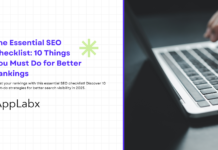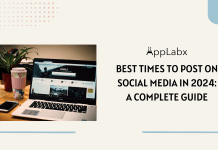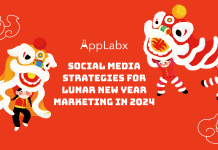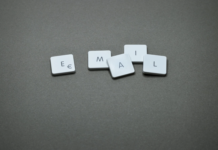Key Takeaways
- Building a high-quality, segmented email list ensures targeted and relevant messaging, driving better engagement and conversions.
- Crafting compelling content with personalized subject lines and clear CTAs is key to boosting open and click-through rates.
- Regularly testing, optimizing, and analyzing campaign performance helps refine strategies for improved results over time.
Email marketing remains one of the most powerful tools in the digital marketing landscape.
Despite the rise of social media, mobile apps, and other communication channels, email continues to offer businesses a direct line to their customers.
Whether you’re a small business owner, a marketer at a large enterprise, or an eCommerce entrepreneur, email marketing is a cost-effective and highly efficient way to build and nurture relationships with your audience.
The effectiveness of email marketing campaigns, however, isn’t just about sending out random emails. It requires strategy, understanding of your audience, and constant optimization to achieve meaningful results.

In today’s fast-paced and competitive digital environment, the challenge is not just reaching your audience but engaging them in a way that drives action. This is where creating effective email marketing campaigns becomes crucial.
But what does “effective” mean in the context of email marketing?
It’s not just about crafting catchy subject lines or offering enticing discounts. Effective email marketing campaigns go beyond these superficial aspects by focusing on creating relevant, personalized, and timely content that resonates with the recipients. They are about strategically using email as a channel to inform, engage, and convert your subscribers into loyal customers.
This step-by-step guide is designed to help you understand the entire process of creating an effective email marketing campaign—from the very basics of building your email list to the final step of analyzing your campaign’s performance.
Whether you are starting from scratch or looking to optimize an existing campaign, this guide will provide actionable insights, proven strategies, and practical tips to help you achieve your email marketing goals.
Why Email Marketing Is Still a Powerful Tool
One of the key reasons why email marketing continues to dominate the digital marketing space is its high return on investment (ROI). According to numerous studies, email marketing has an average ROI of 4200%, meaning that for every dollar spent on email marketing, businesses see an average return of $42.
The reason for such a high ROI lies in the ability to directly reach individuals who have already expressed interest in your business, making them more likely to engage with your content and convert into paying customers.
Furthermore, email marketing allows for a high level of personalization. Unlike social media, where you are competing for attention among countless posts, emails provide a personal, one-on-one communication channel.
By segmenting your email list and personalizing your messages, you can deliver content that speaks directly to the needs, interests, and behaviors of each individual subscriber. This personal touch fosters trust and increases the likelihood of your email being opened, read, and acted upon.
However, with the growing volume of emails consumers receive daily, creating an effective email marketing campaign is more complex than simply hitting the “send” button. In fact, without proper strategy and execution, your emails risk being ignored or marked as spam.
This is why it is essential to follow a structured approach that takes into account your audience’s preferences, behaviors, and expectations.
The Importance of Strategy in Email Marketing Campaigns
While email marketing is undeniably powerful, its effectiveness is highly dependent on the strategy behind it. Simply sending a generic email blast to your entire list is unlikely to yield meaningful results. To stand out in crowded inboxes, your emails must offer value, relevancy, and a clear call to action. A well-crafted strategy ensures that your email campaigns align with your business objectives and meet the needs of your subscribers.
An effective email marketing strategy involves several critical components, including defining clear goals, understanding your target audience, creating engaging content, optimizing your emails for mobile devices, and continually testing and optimizing your campaigns. Additionally, understanding the importance of automation and email list segmentation can greatly enhance the performance of your email campaigns, allowing for more targeted and timely messaging.
What You Will Learn in This Guide
In this comprehensive guide, we will break down the email marketing process into easy-to-follow steps that will empower you to create high-performing campaigns. We’ll start by helping you understand the fundamentals of email marketing, then move on to setting clear, measurable goals that will guide your campaigns. From there, we’ll delve into building and segmenting your email list to ensure you’re targeting the right audience with the right message.
Next, we’ll walk you through the process of crafting compelling email content that captures attention and drives action. We’ll discuss how to design visually appealing emails that are optimized for mobile devices and how to leverage automation to streamline your campaigns. Finally, we’ll explore how to measure your campaign’s success, conduct A/B testing, and continuously refine your strategy for even better results.
Throughout this guide, you’ll find practical examples, real-world case studies, and actionable tips that you can apply immediately to improve your email marketing efforts. Whether you’re aiming to increase open rates, boost click-through rates, or improve conversion rates, this guide will provide you with the tools and knowledge you need to succeed.
By the end of this article, you will have a clear roadmap for creating email marketing campaigns that not only reach your audience but also inspire them to take action, leading to increased revenue, customer retention, and brand loyalty.
In the fast-evolving world of digital marketing, staying ahead of the competition means mastering the art and science of email marketing. So, if you’re ready to unlock the full potential of your email campaigns and drive real results, read on.
But, before we venture further, we like to share who we are and what we do.
About AppLabx
From developing a solid marketing plan to creating compelling content, optimizing for search engines, leveraging social media, and utilizing paid advertising, AppLabx offers a comprehensive suite of digital marketing services designed to drive growth and profitability for your business.
AppLabx is well known for helping companies and startups use Email Marketing to drive web traffic to their websites and web apps.
At AppLabx, we understand that no two businesses are alike. That’s why we take a personalized approach to every project, working closely with our clients to understand their unique needs and goals, and developing customized strategies to help them achieve success.
If you need a digital consultation, then send in an inquiry here.
A Step-by-Step Guide to Creating Effective Email Marketing Campaigns
- Understanding the Basics of Email Marketing
- Setting Clear Goals for Your Email Marketing Campaign
- Building and Segmenting Your Email List
- Crafting Compelling Email Content
- Designing Mobile-Friendly Email Templates
- Testing and Optimizing Your Email Campaigns
- Automating and Scheduling Email Campaigns
- Complying with Email Marketing Regulations
- Analyzing and Refining Your Email Marketing Strategy
1. Understanding the Basics of Email Marketing
Email marketing is a powerful and direct way for businesses to communicate with their audience. It is an essential tool in any marketer’s toolbox, whether for increasing sales, driving traffic, or building brand awareness. In this section, we will explore the fundamental aspects of email marketing, which will set the stage for developing more advanced strategies and techniques. Understanding these basics will ensure your email marketing efforts are well-targeted, effective, and aligned with your business goals.
What is Email Marketing?
- Email marketing is the use of email to promote products, services, or engage with customers to build relationships.
- It allows businesses to communicate directly with their target audience by delivering messages to their inbox, where they are more likely to be seen.
- Emails can be used for various purposes, such as:
- Promotional offers and discounts
- Newsletters with industry updates
- Product launches and announcements
- Customer retention and loyalty programs
- Transactional emails (order confirmations, shipping notifications)
Example: A clothing store may send a weekly newsletter highlighting new arrivals, upcoming sales, and styling tips. This keeps customers engaged and encourages repeat purchases.
Why Email Marketing Matters
- Direct Communication: Emails provide a direct line to customers, unlike social media, where you must compete for attention in crowded feeds.
- High ROI: Studies show that email marketing has an average return on investment (ROI) of 4200%, making it one of the most cost-effective digital marketing strategies.
- Personalization: Unlike other channels, email allows for targeted messaging. You can segment your audience and send personalized content based on demographics, preferences, or past behavior.
- Measurability: Email platforms provide detailed analytics, such as open rates, click-through rates, and conversion rates, allowing businesses to track the success of campaigns and optimize future efforts.
Example: An online retailer sends personalized emails to customers based on their previous purchases, offering relevant product recommendations. This increases the chances of them making a purchase.
Different Types of Email Marketing Campaigns
There are various types of email marketing campaigns, each serving a specific purpose. Below are the most common categories:
- Newsletters
- Regular updates sent to subscribers.
- Typically include company news, blog updates, and product highlights.
- Used to maintain engagement with customers and keep them informed.
- Promotional Emails
- These emails aim to drive sales or promote special offers.
- Often feature discounts, flash sales, or limited-time offers to encourage quick action.
- Transactional Emails
- Automated emails triggered by a customer’s action or interaction with your website.
- Common types include order confirmations, shipping updates, and password resets.
- Abandoned Cart Emails
- Sent to customers who have added items to their cart but did not complete the purchase.
- Typically includes a reminder and sometimes an incentive (like a discount or free shipping) to encourage the customer to complete their purchase.
- Welcome Emails
- The first email a new subscriber receives after joining your email list.
- Often used to introduce the company, set expectations for future emails, and offer an incentive to encourage first-time purchases.
Key Elements of an Email Marketing Campaign
Effective email marketing campaigns consist of several key components, each of which plays a role in making the campaign successful.
- Subject Line
- The subject line is the first thing recipients see, making it crucial for catching their attention.
- It should be short, clear, and compelling, offering a reason to open the email.
- A good subject line can drastically improve open rates.
- Email Body Content
- The content inside the email must be relevant, valuable, and aligned with the recipient’s needs.
- It should include a clear and concise message, often with a call-to-action (CTA).
- Personalization plays a big role—using the subscriber’s name or referring to past purchases increases engagement.
- Call-to-Action (CTA)
- Every email should include a clear CTA, guiding the reader on what to do next.
- Whether it’s to shop now, read a blog post, or sign up for an event, the CTA should be prominent and easy to find.
- A well-designed CTA can significantly boost click-through rates.
- Design and Layout
- The design should be visually appealing, mobile-friendly, and easy to navigate.
- Use concise text, high-quality images, and a clean layout to keep readers engaged.
- A responsive design ensures your emails look great on all devices, particularly on mobile phones, where many emails are opened.
Best Practices for Email Marketing
- Segmentation
- Segment your email list to deliver more relevant content to each group of subscribers.
- You can segment based on various factors such as purchase history, location, engagement level, or demographic information.
- By sending targeted messages, you can increase open rates and improve conversion rates.
- Personalization
- Personalize your emails to make them more engaging.
- Address subscribers by name, recommend products based on their browsing history, or send special offers for their birthday.
- Testing and Optimization
- Regularly test different elements of your emails, such as subject lines, content, CTAs, and sending times.
- A/B testing allows you to identify what resonates best with your audience and improve future campaigns.
- Compliance with Regulations
- Be aware of regulations such as GDPR and CAN-SPAM, which dictate how you must collect, store, and use subscriber data.
- Always provide an easy way for users to unsubscribe from your emails and honor opt-out requests promptly.
Conclusion
Mastering the basics of email marketing is the first step toward running successful email campaigns that drive results. By understanding the different types of emails, the key components of an effective campaign, and the best practices for personalization and segmentation, you will be able to craft targeted, engaging, and high-converting email campaigns. The next step is to implement these principles and start building a more sophisticated strategy that leverages automation, testing, and optimization to continually improve your results.
2. Setting Clear Goals for Your Email Marketing Campaign
Setting clear, measurable goals is one of the most critical steps in creating a successful email marketing campaign. Without defined objectives, it’s challenging to measure the effectiveness of your emails, track your progress, or optimize your strategy over time. Establishing clear goals gives your campaigns direction, purpose, and a way to evaluate their success. In this section, we’ll explore the importance of goal setting in email marketing, how to define your goals, and how to align them with broader business objectives.
Why Setting Clear Goals Matters
- Focus and Direction
- Goals act as a roadmap, guiding your email marketing efforts. Whether you want to increase sales, grow your email list, or improve engagement, having a specific target helps keep your campaign focused and on track.
- Without clear goals, your emails may lack purpose, resulting in low engagement and poor performance.
- Measurable Results
- Setting goals gives you the ability to measure your success. With clear objectives, you can track key performance indicators (KPIs) such as open rates, click-through rates (CTR), and conversion rates.
- It allows you to determine what’s working and where adjustments are needed to improve future campaigns.
- Optimization and Refinement
- By evaluating your goals and comparing them to the results, you can identify areas of improvement.
- Regularly assessing and adjusting your goals ensures your campaigns stay aligned with changing business needs and customer preferences.
How to Set Clear Goals for Your Email Marketing Campaign
To maximize the effectiveness of your email campaigns, it’s essential to set SMART goals. SMART goals are Specific, Measurable, Achievable, Relevant, and Time-bound. Let’s break down each component:
- Specific
- Your goal should be clear and unambiguous. Rather than saying, “I want more email opens,” specify the exact number or percentage increase you aim for.
- Example: “Increase the open rate of our email newsletter by 10% over the next quarter.”
- Measurable
- Define how you’ll measure progress. Use metrics such as open rates, click-through rates, conversion rates, or revenue generated from email campaigns.
- Example: “Achieve a click-through rate (CTR) of 5% for our product promotion emails.”
- Achievable
- While goals should be ambitious, they must also be realistic. Set goals based on historical data or industry standards, considering your available resources.
- Example: If your average open rate is 15%, setting a goal of 50% might be unrealistic, but aiming for a 20-25% open rate is more attainable.
- Relevant
- Ensure that your goal is aligned with your business objectives. Your email marketing goals should support broader marketing and business strategies.
- Example: If your business goal is to grow your eCommerce store, an appropriate email marketing goal might be to increase the number of abandoned cart emails sent or improve conversion rates from product recommendation emails.
- Time-bound
- Establish a timeline for achieving your goal. A time frame keeps the team accountable and helps measure progress.
- Example: “Increase sales generated from email campaigns by 15% within the next six months.”
Common Types of Email Marketing Goals
There are several types of goals you might consider depending on your broader business objectives and current needs. Below are the most common types of email marketing goals:
- Increase Email Open Rates
- This goal is focused on getting more subscribers to open your emails. A higher open rate often signals that your subject lines and pre-header text are compelling and relevant.
- Strategies to achieve this goal:
- Test different subject lines to determine what resonates best with your audience.
- Personalize subject lines with subscriber names or references to past interactions.
- Optimize send times based on audience behavior and time zones.
- Boost Click-Through Rates (CTR)
- Achieving a high CTR indicates that your subscribers are not only opening your emails but also taking action, such as clicking links or buttons inside the email.
- Strategies to achieve this goal:
- Craft clear and compelling CTAs (Call-to-Actions) that prompt immediate action.
- Include valuable content or offers that drive engagement.
- Use A/B testing to determine the most effective placement and design of CTAs.
- Increase Conversion Rates
- Conversion rates are one of the most important metrics, as they directly measure the number of recipients who take the desired action (e.g., make a purchase, sign up for a webinar).
- Strategies to achieve this goal:
- Make your offers clear and enticing, with strong CTAs and a seamless user experience.
- Use personalized recommendations or dynamic content based on past behavior.
- Optimize landing pages to ensure they align with the email’s messaging and CTA.
- Grow Your Email List
- A growing email list is essential for reaching new potential customers. An expanding subscriber base means more opportunities to convert leads into customers.
- Strategies to achieve this goal:
- Implement opt-in forms on your website or social media platforms.
- Offer lead magnets, such as free downloads, exclusive content, or discounts, in exchange for email sign-ups.
- Use referral programs that encourage current subscribers to share your emails with others.
- Increase Revenue from Email Campaigns
- If your goal is to directly impact revenue, focusing on driving sales through your email marketing is essential.
- Strategies to achieve this goal:
- Send targeted promotional emails, such as flash sales, product recommendations, or personalized offers.
- Segment your email list to send the right offer to the right audience at the right time.
- Utilize cart abandonment emails to encourage customers to complete their purchases.
- Improve Customer Retention
- Retaining customers is often more cost-effective than acquiring new ones. Email marketing can play a significant role in keeping customers engaged and loyal to your brand.
- Strategies to achieve this goal:
- Implement automated email sequences, such as welcome emails, loyalty programs, and post-purchase follow-ups.
- Send re-engagement emails to inactive subscribers offering special discounts or personalized content.
Aligning Email Marketing Goals with Business Objectives
Your email marketing goals should align with your overall business strategy. For example:
- If your company is focused on increasing brand awareness, your email marketing goal could be to expand your subscriber list, increase open rates, or promote educational content to new audiences.
- If your focus is on driving sales, your email marketing goal may revolve around improving conversion rates, increasing revenue from email promotions, or implementing personalized offers.
- If your goal is customer retention, then your email marketing goals could be to improve engagement with existing customers, re-engage inactive subscribers, or encourage repeat purchases through personalized product recommendations.
Tracking and Measuring Success
Once you have set your goals, the next step is to monitor and track your progress. Regularly measuring your success will help you understand which strategies are working and which areas need improvement. Common metrics to track include:
- Open Rate: Percentage of recipients who open your email. Indicates the effectiveness of your subject lines and timing.
- Click-Through Rate (CTR): Percentage of recipients who click on links within your email. Measures how compelling and relevant your content is.
- Conversion Rate: The percentage of email recipients who complete the desired action, such as making a purchase or signing up for a webinar.
- Unsubscribe Rate: The rate at which people unsubscribe from your email list. A high unsubscribe rate may indicate that your emails are not meeting the expectations of your audience.
- Bounce Rate: Percentage of emails that couldn’t be delivered. A high bounce rate could indicate issues with your email list quality or technical delivery problems.
By analyzing these metrics, you can refine your email marketing goals and strategies over time, ensuring that your campaigns are continuously improving and driving greater results.
Conclusion
Setting clear and actionable goals is crucial to the success of your email marketing campaigns. By following the SMART framework and aligning your goals with your broader business objectives, you can create focused campaigns that drive measurable results. Whether you aim to increase open rates, boost sales, or grow your email list, setting well-defined goals will help you stay on track and make data-driven decisions that improve the effectiveness of your email marketing efforts.
3. Building and Segmenting Your Email List
A well-maintained and targeted email list is the backbone of any successful email marketing campaign. Building and segmenting your email list effectively allows you to reach the right people with the right message at the right time. In this section, we will explore the importance of building a high-quality email list and the best practices for segmenting it to ensure your campaigns are relevant and engaging.
Why Building a Quality Email List Matters
- Direct Access to Your Audience
- Email marketing allows you to communicate directly with your audience, bypassing the noise of social media platforms. A quality email list ensures that your messages are reaching people who are genuinely interested in what you offer.
- Increased Engagement
- A targeted email list results in more engaged subscribers. People who have opted into your email list are more likely to open your emails, click on links, and take action, such as making a purchase or signing up for a service.
- Higher Conversion Rates
- Emails sent to a highly targeted list are more likely to convert, as the content can be tailored to the specific interests or behaviors of each segment. This results in a better ROI for your email campaigns.
- Better Reputation and Deliverability
- A clean, permission-based email list improves your sender reputation and ensures better email deliverability. When you focus on quality over quantity, you reduce the chances of your emails being marked as spam.
How to Build Your Email List
Building a high-quality email list is a gradual process that requires strategic planning and effective tactics. Below are several methods to grow your list organically.
- Use Lead Magnets
- A lead magnet is an incentive that encourages visitors to subscribe to your email list. This could include:
- Free eBooks or whitepapers
- Webinars or online courses
- Discount coupons or free trials
- Exclusive access to reports or industry insights
- A lead magnet is an incentive that encourages visitors to subscribe to your email list. This could include:
- Create Optimized Signup Forms
- Make your email sign-up process as simple and frictionless as possible. Avoid asking for too much information upfront and use clear, compelling calls to action (CTAs).
- Placement is key—ensure the sign-up form is easy to find on your website, such as in the header, footer, or as an exit-intent pop-up.
- Leverage Social Media Platforms
- Promote your email sign-up form on your social media profiles, through posts, or even in the bio section.
- Run social media campaigns where followers are incentivized to join your email list for exclusive content or discounts.
- Run Contests and Giveaways
- Hosting contests or giveaways is a great way to incentivize sign-ups. Ensure that participants understand they are subscribing to receive updates or future promotional emails.
- Promote the contest through various channels such as social media, your website, or even through existing email lists.
- Offer Referral Programs
- Encourage your existing subscribers to refer friends or colleagues to your email list. You can incentivize this behavior with rewards like discounts, special content, or exclusive deals.
- Create Landing Pages for Email Signups
- Design dedicated landing pages focused entirely on collecting email subscriptions. These pages should clearly outline the benefits of subscribing and include an easy-to-use form.
Best Practices for Email List Hygiene
Once you’ve built your email list, it’s crucial to maintain it by following these best practices:
- Regularly Clean Your List
- Remove inactive subscribers from your list. Sending emails to people who never open your messages negatively impacts your deliverability rate. Use email list cleaning tools or analytics to identify inactive users.
- Regularly purging your list ensures that you are only targeting people who are genuinely interested in your content.
- Use Double Opt-In
- A double opt-in process requires subscribers to confirm their email address after initially signing up. This ensures that the people joining your list are genuinely interested in receiving your content.
- It helps maintain a clean, permission-based list and reduces the risk of spam complaints.
- Offer an Easy Unsubscribe Option
- Always include a visible and easy-to-use unsubscribe link in your emails. Forcing people to stay on your list when they don’t want to results in higher unsubscribe rates and can harm your email deliverability.
Segmenting Your Email List for Better Results
Email segmentation is the practice of dividing your email list into smaller groups based on specific criteria, such as demographics, behavior, or engagement levels. By sending targeted messages to each segment, you can ensure that your content is relevant to the recipients, leading to higher open rates, click-through rates, and conversions.
- Why Email Segmentation Matters
- Improved Relevance: Segmentation allows you to send more personalized and relevant content, which increases engagement and minimizes unsubscribes.
- Higher Engagement: Subscribers are more likely to interact with emails that align with their specific needs or interests.
- Increased Conversions: By sending tailored offers and product recommendations, you improve the chances of driving purchases or other desired actions.
- Common Email List Segmentation Criteria
- Demographics
- Segment your list based on attributes like age, gender, location, or job title to deliver more relevant content.
- Example: A skincare brand might send different product recommendations to men and women based on their preferences and skincare needs.
- Purchase History
- Segment based on past purchases or browsing behavior. This allows you to send targeted product recommendations and promotions based on previous interactions.
- Example: An online bookstore could send an email recommending books from the same genre as those previously purchased by the customer.
- Engagement Level
- Segment subscribers based on how actively they engage with your emails. For example, categorize your list into:
- Active subscribers (open and click regularly)
- Inactive subscribers (have not engaged in the last 3 months)
- Lapsed subscribers (have not engaged in the last 6 months or more)
- Segment subscribers based on how actively they engage with your emails. For example, categorize your list into:
- Customer Lifecycle Stage
- Send different emails depending on where the subscriber is in their customer journey (e.g., new subscribers, leads, active customers, or churned customers).
- Example: A SaaS company might send onboarding emails with tutorials and features to new users, while sending feature upgrade emails to existing customers.
- Geographic Location
- Tailor your emails based on the geographic location of your subscribers. This is particularly useful for sending location-specific offers, such as region-based promotions or store events.
- Example: A restaurant chain may send different offers to subscribers in various cities, offering local promotions or special events.
- Behavioral Segmentation
- Segment based on user behavior, such as pages visited, items viewed, or actions taken on your website. Behavioral data can help you send highly targeted emails that match the user’s interests or needs.
- Example: An eCommerce retailer could send an abandoned cart email to users who left items in their cart without completing the purchase, offering a special discount to encourage conversion.
- Demographics
Tools for Building and Segmenting Your Email List
Several email marketing platforms offer tools and features that can help you build and segment your email list effectively. Some of the top tools include:
- Mailchimp: Known for its easy-to-use interface and robust segmentation features, Mailchimp allows you to group subscribers by demographics, activity, and more.
- Constant Contact: Offers list management tools that allow you to segment based on past interactions, purchase behavior, and geographic location.
- ActiveCampaign: Provides advanced segmentation and automation capabilities, helping you send highly targeted emails based on user behavior and lifecycle stage.
- HubSpot: HubSpot’s email marketing tools allow you to segment based on both behavioral and demographic data, enabling personalized email campaigns.
Conclusion
Building and segmenting your email list are foundational steps in running a successful email marketing campaign. By using best practices to build a permission-based list, and implementing segmentation strategies, you can ensure your emails are highly relevant and engaging. This approach will help you increase your engagement rates, improve conversion rates, and achieve a higher ROI from your email marketing efforts. Over time, refining your list-building and segmentation tactics will create a loyal, responsive subscriber base that continues to drive long-term success.
4. Crafting Compelling Email Content
The content of your email is one of the most critical factors in determining the success of your email marketing campaign. Whether you want to increase engagement, drive conversions, or build brand awareness, your email content must be engaging, relevant, and valuable to your audience. In this section, we will break down the key components of effective email content, provide tips for writing persuasive and compelling emails, and showcase examples that will inspire your own email campaigns.
The Importance of Compelling Email Content
- Engagement: Engaging content captures the attention of your audience, prompting them to open, read, and interact with your emails.
- Conversions: Well-crafted emails can drive recipients to take specific actions, such as clicking through to a website, making a purchase, or signing up for a service.
- Brand Perception: Consistent, high-quality content helps build trust with your audience and reinforces your brand identity.
- Customer Relationships: Personalizing your email content builds stronger relationships with subscribers by delivering relevant messages tailored to their needs and preferences.
Elements of Compelling Email Content
To ensure your emails resonate with your audience, every piece of content you include must be purposeful, valuable, and well-crafted. Below are the essential components of compelling email content.
- Subject Line
- The subject line is the first thing your subscribers see and plays a pivotal role in whether your email will be opened. A great subject line grabs attention, piques curiosity, and offers a clear reason for opening the email.
- Best Practices for Writing Compelling Subject Lines:
- Keep it short and to the point—aim for 6-10 words.
- Use action-oriented language to create urgency or excitement.
- Include personalization, such as the recipient’s name or recent actions they took (e.g., “Your personalized offer inside, John!”).
- Test different subject lines to see which ones perform best.
- Preheader Text
- Preheader text works in tandem with the subject line and appears next to it in most email clients. It should complement the subject line and give recipients more context about what the email contains.
- Best Practices for Preheader Text:
- Keep it under 100 characters.
- Avoid repeating the subject line; instead, expand on the message.
- Include an enticing offer or valuable content preview.
- Personalization
- Personalized emails see higher engagement rates compared to generic ones. Personalization can include anything from addressing the recipient by name to offering tailored recommendations based on past purchases or preferences.
- Ways to Personalize Email Content:
- Use the subscriber’s first name in the greeting or subject line.
- Offer personalized product recommendations based on past behavior.
- Send birthday or anniversary emails with special offers.
- Body Copy
- The body of the email should deliver the core message in a clear, concise, and engaging way. Whether you’re promoting a sale, sharing new content, or offering updates, make sure the content is relevant and valuable to the reader.
- Best Practices for Writing Engaging Body Copy:
- Focus on benefits rather than features. Explain how your offer or product will solve a problem or improve the recipient’s life.
- Break the content into digestible chunks, using short paragraphs and bullet points.
- Use engaging language that aligns with your brand’s tone and voice.
- Keep it concise—respect your reader’s time by getting straight to the point.
- Call to Action (CTA)
- A strong call to action (CTA) is critical for driving recipients to take the next step, whether it’s making a purchase, signing up for a webinar, or reading a blog post. Your CTA should be clear, action-oriented, and easy to find.
- Best Practices for Creating Effective CTAs:
- Use actionable, urgent language (e.g., “Shop Now,” “Claim Your Offer,” “Download Free Guide”).
- Make the CTA stand out visually by using contrasting colors or buttons.
- Keep the CTA above the fold (so the recipient doesn’t have to scroll to see it).
- Limit the number of CTAs—focus on one main action you want recipients to take.
- Visuals and Design
- Email design plays a crucial role in how recipients interact with your content. Well-designed emails are more visually appealing and can help highlight important information, making it easier for subscribers to engage.
- Best Practices for Email Design:
- Use a mobile-responsive design, as many users will read emails on mobile devices.
- Use high-quality images that enhance your message (but avoid overloading the email with images).
- Include a balanced layout—don’t overwhelm the reader with too much text or too many visuals.
- Maintain consistency with your brand’s colors, fonts, and style to reinforce brand identity.
- Social Proof
- Incorporating social proof in your emails, such as customer reviews, testimonials, or user-generated content, can increase trust and influence purchasing decisions. Subscribers are more likely to engage with your offer if they see that others have had positive experiences.
- Ways to Include Social Proof:
- Add customer testimonials or reviews directly in the email.
- Feature user-generated content, such as photos or stories from satisfied customers.
- Include trust badges, certifications, or awards that highlight the credibility of your brand.
- Urgency and Scarcity
- Urgency and scarcity are powerful psychological triggers that can encourage recipients to take immediate action. Whether it’s a limited-time offer, low stock levels, or an exclusive event, creating a sense of urgency can drive more conversions.
- Best Practices for Creating Urgency and Scarcity:
- Include countdown timers for limited-time offers or promotions.
- Use language that emphasizes urgency, such as “last chance,” “only X left in stock,” or “limited availability.”
- Send reminder emails to subscribers as the offer deadline approaches.
Optimizing Email Content for Different Campaign Types
Different types of email campaigns may require distinct approaches when it comes to content. Here’s how to adjust your email content based on the campaign goal.
- Promotional Emails
- Focus on the value or discount offered. Make the offer clear, and ensure the CTA is strong and visible.
- Example: “Get 50% off your next purchase—limited time only. Shop Now!”
- Newsletters
- Provide valuable, informative content that keeps your subscribers engaged and coming back for more. Include links to blog posts, updates, or industry news.
- Example: “This month’s newsletter: Top 5 trends in digital marketing, plus a sneak peek of our upcoming webinar.”
- Abandoned Cart Emails
- Focus on reminding the recipient about the items they left behind, offering an incentive (like a discount), and creating urgency to complete the purchase.
- Example: “You left something behind! Complete your purchase within the next 24 hours and save 10%.”
- Event Invitations
- Make the event details clear, emphasize the value of attending, and provide a straightforward registration link.
- Example: “Join us for an exclusive webinar on social media strategies. Register now to secure your spot!”
- Transactional Emails
- Ensure clarity and accuracy of information, as these emails are often expected and important for the recipient. Add a personal touch or relevant recommendations if possible.
- Example: “Your order has been confirmed. Check out these related products to complete your look!”
A/B Testing Email Content
Testing different elements of your email content is essential for determining what resonates most with your audience. A/B testing (also known as split testing) allows you to compare two versions of an email to see which performs better.
- What to A/B Test:
- Subject lines: Test different subject lines to see which generates higher open rates.
- Body copy: Experiment with different ways of presenting offers or crafting messages.
- CTAs: Test variations of CTA text or placement to determine what drives more clicks.
- Visuals: Compare different image styles or layout formats.
- Analyzing Results
- Track key metrics like open rates, click-through rates, and conversion rates to assess the effectiveness of each variation. Use this data to continuously refine your email content strategy.
Conclusion
Crafting compelling email content is both an art and a science. By focusing on key elements like subject lines, personalization, body copy, CTAs, and visuals, you can create emails that resonate with your audience and drive higher engagement and conversions. Consistently optimizing your content, leveraging A/B testing, and tailoring your approach for different campaign types will ensure your emails remain effective and relevant over time. Through thoughtful content creation, you can build stronger relationships with your subscribers, increase brand loyalty, and ultimately achieve greater success in your email marketing campaigns.
5. Designing Mobile-Friendly Email Templates
As mobile usage continues to dominate, ensuring your email templates are mobile-friendly is no longer optional—it’s essential. A growing number of people check their emails on smartphones and tablets, which means your emails need to be designed with these devices in mind to provide the best user experience. In this section, we’ll explore how to design mobile-friendly email templates that look great, function smoothly, and drive higher engagement rates.
Why Mobile-Friendly Email Templates Matter
- Increased Mobile Email Open Rates
- A significant portion of email opens happen on mobile devices. If your email is not optimized for mobile, you risk losing potential engagement and conversions.
- According to studies, nearly 55% of emails are opened on mobile devices, making it crucial to design with mobile in mind.
- Improved User Experience
- Mobile-friendly emails ensure that recipients have a seamless experience, whether they are reading your email on a small screen or interacting with CTAs and images.
- If your email is difficult to read or navigate on a mobile device, subscribers are likely to abandon it or mark it as spam.
- Better Engagement and Conversion Rates
- When emails are optimized for mobile, the chances of higher click-through rates, conversions, and even purchases increase. Mobile-friendly emails are more likely to grab the reader’s attention and drive them to take action.
Key Design Elements for Mobile-Friendly Emails
To design mobile-friendly email templates, several key elements must be considered. Below are the crucial design aspects that ensure your emails display perfectly across all devices.
- Responsive Design
- Responsive design ensures that your email layout adapts automatically to different screen sizes. This eliminates the need for users to zoom in or scroll horizontally to read the content.
- Best Practices for Responsive Email Design:
- Use fluid grids: A flexible layout that adjusts to the screen size and device resolution.
- Implement media queries: These are CSS techniques that allow you to adjust styles for different screen sizes and devices.
- Avoid fixed-width layouts: Fixed-width designs don’t adapt well to mobile screens, which may cause readers to miss content or experience a poor viewing experience.
- Optimized Text and Font Size
- Text that is too small or difficult to read on mobile devices leads to higher bounce rates. Ensuring that your text is legible on all screen sizes is crucial for a positive user experience.
- Best Practices for Font Size:
- Use at least 14px for body text and 22px or more for headings.
- Make sure that line spacing is adequate, typically 1.5 times the font size, to ensure readability.
- Choose web-safe fonts like Arial, Helvetica, or Georgia, which are supported across devices.
- Scannable Layouts
- Mobile users typically skim through emails, so it’s important to structure your content in a way that makes it easy to scan.
- Best Practices for Scannable Layouts:
- Use short paragraphs: Avoid long blocks of text; break your content into smaller, digestible pieces.
- Use bullet points: Organize key information into lists for easier readability.
- Highlight key information: Use bold or color to draw attention to critical points like CTAs or offers.
- Clear and Large Call to Action (CTA) Buttons
- The CTA button is the main focal point of most marketing emails. If the button is too small or hard to tap, users may get frustrated and leave the email.
- Best Practices for CTA Buttons:
- Make CTA buttons large enough to tap comfortably on a mobile screen, ideally around 44px by 44px.
- Use contrasting colors for CTA buttons so they stand out from the rest of the content.
- Place the CTA above the fold so that users don’t have to scroll to find it.
- Use actionable and concise copy, such as “Shop Now,” “Claim Your Discount,” or “Sign Up Today.”
- Single-Column Layout
- Multi-column layouts can look cluttered and difficult to navigate on mobile devices. A single-column design is often the best choice for mobile optimization, as it presents content in a straightforward and readable way.
- Best Practices for Single-Column Layouts:
- Stack images and text in a single column, with each section of content clearly separated.
- Avoid side-by-side images or buttons, as they might not render well on smaller screens.
- Keep padding and margins balanced to avoid text and images feeling too crammed together.
- Mobile-Friendly Images
- Images play a key role in email design, but they must be optimized for mobile to prevent long load times or poor-quality displays.
- Best Practices for Mobile-Friendly Images:
- Use responsive images: Images should adjust to screen size, ensuring they don’t appear pixelated or overly large on mobile devices.
- Compress images: Large image files can slow down load times, so make sure to compress your images without compromising quality.
- Include alt text: In case the images don’t load, always include descriptive alt text to provide context to the recipient.
- Minimize Email Load Time
- Slow-loading emails can lead to higher bounce rates and decreased engagement. Email load times are particularly important for mobile users, who may be on slower networks.
- Best Practices for Optimizing Load Time:
- Keep your email file size under 100 KB whenever possible.
- Compress images and use HTML to display text rather than images to reduce load time.
- Limit the number of heavy elements, such as large images, animated GIFs, or embedded videos.
Testing Mobile-Friendliness
Before sending your email campaigns, it’s essential to test how your emails will appear across a variety of devices and email clients to ensure they display correctly on both desktop and mobile screens.
- How to Test Mobile-Friendly Emails:
- Use email testing tools like Litmus or Email on Acid to preview how your email will look on different devices and screen sizes.
- Test across various email clients (e.g., Gmail, Outlook, Apple Mail) to ensure consistent formatting and layout.
- Send test emails to yourself and open them on different devices to spot any potential issues.
Conclusion
Designing mobile-friendly email templates is crucial for ensuring that your emails are effective, engaging, and accessible to your audience. By focusing on responsive design, optimized text and visuals, clear CTAs, and a single-column layout, you can create an email that delivers a seamless experience for users on both desktop and mobile devices. Regular testing and optimization based on feedback and performance metrics will help you continuously improve your email design. Ultimately, a mobile-optimized email ensures a better user experience, increased engagement, and higher conversion rates, leading to the overall success of your email marketing campaigns.
6. Testing and Optimizing Your Email Campaigns
To ensure the effectiveness of your email marketing campaigns, it’s crucial to continuously test and optimize different elements. Testing allows you to understand what works best with your audience, while optimization ensures that your emails are continually improving to drive better results. This section will guide you through the process of testing and optimizing your email campaigns, helping you achieve higher open rates, engagement, and conversions.
Why Testing and Optimization Matter
- Maximizing Performance: By regularly testing and optimizing your email campaigns, you can identify high-performing elements and apply those insights to future campaigns.
- Improved Engagement: Optimizing subject lines, content, and CTAs based on testing data helps capture more attention, leading to increased email open rates and interaction.
- Higher Conversion Rates: Testing different offers, layouts, and designs allows you to refine your messaging, ultimately driving more conversions and revenue.
- Audience Insights: Testing provides valuable insights into what resonates with your audience, helping you segment and personalize your campaigns more effectively.
Types of Testing in Email Marketing
There are various testing strategies available to optimize different aspects of your email campaigns. Below are the most common types of tests used by email marketers.
- A/B Testing (Split Testing)
- A/B testing involves comparing two versions of an email to determine which one performs better.
- Key Elements to Test in A/B Testing:
- Subject lines: Experiment with different phrasing, length, and emotional triggers to see what drives more opens.
- Call to Action (CTA): Test different CTA phrases, colors, or placements to discover which one generates more clicks.
- Email copy: Test variations of the email body copy, such as tone, length, or structure.
- Design and Layout: Test changes in the layout, such as whether a single-column layout works better than a multi-column design.
- Images and Visuals: Test whether emails with images perform better than those without.
- Multivariate Testing
- Multivariate testing allows you to test multiple variations of different elements within a single email. Unlike A/B testing, which compares only two versions of an email, multivariate testing enables you to assess multiple variables simultaneously.
- Key Elements to Test in Multivariate Testing:
- Combination of CTAs and images: Test different combinations of CTA text, buttons, and visuals to determine the most effective configuration.
- Layout and Copy: Test different combinations of layouts and email copy to find the most engaging combination.
- Responsive Design Testing
- As mobile devices play a significant role in email opens, it’s crucial to test your emails on various devices and email clients to ensure they render correctly. This is especially important when optimizing for mobile.
- Best Practices for Responsive Design Testing:
- Test emails on different screen sizes, including desktop, tablet, and smartphone.
- Ensure that your emails look good on different email clients, such as Gmail, Outlook, and Apple Mail.
- Test your emails for load time and performance on mobile networks, as slow-loading emails can negatively impact engagement.
- Deliverability Testing
- Deliverability testing ensures that your emails are reaching your subscribers’ inboxes rather than ending up in spam folders. This test helps identify issues with spam filters and email reputation.
- Key Considerations for Deliverability Testing:
- Test the “From” name and email address to ensure recognition and credibility.
- Test subject lines for common spam trigger words (e.g., “Free,” “Urgent,” “Limited Time”).
- Check your email sending frequency to avoid being flagged as spam.
- Use tools like Mail-Tester or Litmus to test your email’s deliverability.
Key Metrics to Analyze and Optimize
When testing and optimizing your email campaigns, tracking key metrics is essential for understanding how well your campaigns are performing. Below are the most important metrics to focus on during the optimization process.
- Open Rate
- The open rate indicates how many subscribers opened your email out of the total recipients.
- How to Optimize Open Rate:
- Focus on crafting compelling subject lines that grab attention and create curiosity.
- Personalize the subject line or use the recipient’s name to improve relevancy.
- Test different sending times to determine when your audience is most likely to open your emails.
- Click-Through Rate (CTR)
- The CTR shows how many recipients clicked on links within your email compared to how many received it. This metric is crucial for measuring engagement.
- How to Optimize CTR:
- Place your CTA above the fold to ensure it’s visible without scrolling.
- Use buttons with actionable text, such as “Shop Now” or “Learn More.”
- Test different types of content (e.g., product recommendations, educational blog posts, etc.) to see which drives more clicks.
- Conversion Rate
- The conversion rate measures how many recipients completed the desired action, such as making a purchase or signing up for a service.
- How to Optimize Conversion Rate:
- Focus on delivering a clear and compelling value proposition that aligns with your audience’s needs.
- Optimize the landing page linked in the email for conversions by ensuring consistency in design and messaging.
- Use scarcity tactics, such as limited-time offers or countdown timers, to encourage recipients to take immediate action.
- Unsubscribe Rate
- The unsubscribe rate is a critical metric that shows how many subscribers opted out after receiving your email. A high unsubscribe rate can indicate that your emails are irrelevant, too frequent, or poorly designed.
- How to Optimize Unsubscribe Rate:
- Segment your email lists to send more personalized and relevant content to your subscribers.
- Avoid overloading your subscribers with too many emails—focus on quality and timing over quantity.
- Ensure that the content you’re sending is highly valuable to your audience, addressing their specific pain points and needs.
- Bounce Rate
- The bounce rate measures how many of your emails failed to be delivered due to issues like incorrect email addresses or server problems.
- How to Optimize Bounce Rate:
- Regularly clean your email list to remove invalid email addresses.
- Ensure that you are using a reputable email service provider with good deliverability.
- Monitor your sender reputation to avoid being flagged as a spammer.
Continuous Optimization Through Iteration
Optimization isn’t a one-time task; it’s an ongoing process. By continually testing and analyzing your email campaigns, you can refine and improve your strategies for better results.
- Learn From Your Data
- Regularly review your email performance data to identify trends and insights.
- Use data to drive decisions and continually tweak your subject lines, copy, CTAs, and design elements for better results.
- Iterate Based on Learnings
- Apply the lessons learned from previous tests to new campaigns, optimizing for higher engagement and conversions each time.
- Experiment with new strategies, content formats, or email automation workflows to stay innovative.
Conclusion
Testing and optimizing your email campaigns is a vital step in ensuring they deliver the best possible results. By regularly conducting A/B and multivariate tests, analyzing key metrics, and continuously iterating on your campaigns, you can significantly improve your email performance. Tracking engagement rates, open rates, conversions, and other important metrics allows you to refine your strategies, delivering highly effective and personalized emails that resonate with your audience and drive business growth.
7. Automating and Scheduling Email Campaigns
Email marketing automation and scheduling are powerful strategies that help marketers save time, deliver timely content, and increase engagement. With the right tools and techniques, you can send personalized emails to your subscribers at the optimal time, ensuring they receive relevant content when they are most likely to engage. This section explores how to effectively automate and schedule your email campaigns for maximum impact, improving efficiency while maintaining relevance to your audience.
Why Automating and Scheduling Email Campaigns Is Crucial
- Time Efficiency
- Email marketing automation reduces the manual work involved in creating and sending emails, allowing marketers to focus on other essential tasks.
- It helps to deliver emails based on triggers (e.g., user actions or milestones), ensuring timely and personalized communication without ongoing effort.
- Personalization at Scale
- Automation allows you to send tailored messages to large segments of your audience without manually writing every email.
- Using customer data, you can send personalized emails that resonate with individual subscribers, improving engagement and conversion rates.
- Consistency and Timeliness
- Scheduling your emails ensures that you maintain a consistent flow of communication with your audience, delivering timely messages that align with your marketing goals.
- Automated emails, such as welcome emails, can be triggered based on specific actions, ensuring you engage with subscribers at the right moment.
Key Types of Automated Emails
Automation isn’t just about sending one-off emails; it’s about creating an entire email sequence that aligns with your subscribers’ behaviors and needs. Below are some of the most effective types of automated emails you can use.
- Welcome Emails
- Purpose: A welcome email is typically sent to new subscribers as soon as they opt in to your list.
- Key Features:
- Personalize the greeting by addressing the subscriber by name.
- Include a friendly introduction to your brand, products, or services.
- Provide an incentive, such as a discount or free resource, to encourage the first purchase or interaction.
- Abandoned Cart Emails
- Purpose: These emails are sent automatically to customers who add items to their shopping cart but do not complete the checkout process.
- Key Features:
- Include images of the abandoned products with a direct link back to the cart for easy checkout.
- Offer an incentive like a discount or free shipping to encourage the customer to complete the purchase.
- Send follow-up reminders at different intervals to increase the chances of conversion.
- Birthday or Anniversary Emails
- Purpose: Automated emails that are sent based on a subscriber’s birthdate or a subscription anniversary.
- Key Features:
- Personalize the email with the recipient’s name and reference their special day (birthday, sign-up anniversary, etc.).
- Offer an exclusive discount, free gift, or promotion to celebrate the occasion.
- Create a sense of connection and loyalty by acknowledging milestones with the brand.
- Re-engagement Emails
- Purpose: Sent to inactive subscribers who have not opened or clicked on your emails for a set period.
- Key Features:
- Remind the subscriber of the value they get from being part of your email list.
- Offer an incentive or exclusive content to bring them back into the fold.
- Ask for feedback on why they haven’t been engaging and offer them options to tailor the email preferences.
- Post-Purchase Follow-Up Emails
- Purpose: Sent after a customer makes a purchase to provide additional value or ask for feedback.
- Key Features:
- Thank the customer for their purchase and offer relevant recommendations based on what they bought.
- Encourage reviews or testimonials to build social proof and engage customers further.
- Offer complementary products or services that the customer may find valuable.
Best Practices for Email Marketing Automation
To ensure your email automation campaigns run smoothly and effectively, there are several best practices you should follow. These tips will help you optimize your campaigns and achieve higher engagement.
- Segment Your Audience
- Not all of your subscribers are the same, so it’s important to segment your email list based on behaviors, preferences, and demographics.
- How to Segment Your Audience:
- By purchase history: Send product recommendations based on past purchases.
- By engagement level: Target subscribers who open emails frequently with more valuable content or exclusive offers.
- By location: Customize your messages based on regional events, offers, or promotions.
- Set Clear Triggers for Automation
- Triggers are events that prompt the sending of automated emails. Understanding when to send emails based on customer actions is crucial for effective automation.
- Common Triggers:
- When a subscriber opts into your list.
- When a customer abandons their shopping cart.
- After a purchase is made, triggering a thank-you email or recommendations.
- When a user clicks on a particular product in your email, sending them a follow-up message.
- Personalize the Experience
- Personalization plays a significant role in improving engagement rates. Use data to customize emails based on the recipient’s preferences and actions.
- How to Personalize Emails:
- Use the recipient’s first name in the subject line and email body.
- Send personalized product recommendations based on browsing or purchase history.
- Offer exclusive deals based on their behavior, such as past product interests or spending habits.
- Test Your Automated Emails
- Even though the emails are automated, it’s still essential to test them before they go live.
- Testing Strategies:
- Test subject lines and CTAs for clarity and effectiveness.
- Ensure emails render correctly across devices and email clients.
- Monitor deliverability and check for any technical issues.
- Monitor and Optimize Email Performance
- Once your email campaigns are automated, it’s essential to monitor how they are performing. Use metrics like open rates, click-through rates, and conversion rates to gauge success.
- How to Optimize Performance:
- Use A/B testing on subject lines, CTAs, and email content to see what resonates best with your audience.
- Analyze user behavior to identify opportunities for further segmentation and content personalization.
- Continuously update your automation workflows based on data insights and trends.
Scheduling Your Email Campaigns
Scheduling your emails allows you to send messages at the optimal time without manual intervention. This is particularly useful for reaching your audience in different time zones or ensuring timely promotions.
- Choose the Right Timing
- The timing of your emails can significantly impact their effectiveness. By analyzing your past email performance, you can determine the best days and times to send emails.
- Best Practices for Scheduling Emails:
- Send emails when your audience is most likely to be active. For example, sending emails early in the morning or during lunch breaks can increase the chances of engagement.
- Use time zone segmentation to ensure emails are delivered at optimal times for recipients across the globe.
- Use Automated Scheduling Tools
- Email marketing platforms often offer scheduling features that allow you to set a date and time for your email to be sent automatically.
- Benefits of Automated Scheduling:
- It ensures your emails reach your audience at the most effective times without you needing to manually send them.
- It allows for consistency in your email campaigns, helping you maintain regular communication with your audience.
Conclusion
Automating and scheduling email campaigns is essential for marketers looking to save time, increase personalization, and deliver timely content to their audience. By setting up effective automated workflows, segmenting your audience, and testing key elements of your emails, you can significantly enhance your email marketing strategy. Scheduling your emails to be sent at optimal times further ensures you reach your audience when they are most likely to engage, ultimately driving higher open rates, click-through rates, and conversions. With the right approach, automation and scheduling will not only increase the efficiency of your email marketing efforts but also improve the overall effectiveness of your campaigns.
8. Complying with Email Marketing Regulations
In the fast-paced world of email marketing, compliance with legal regulations is crucial to maintain trust, avoid fines, and ensure the longevity of your email campaigns. Email marketing is highly regulated across different regions, and non-compliance can lead to severe consequences. From the General Data Protection Regulation (GDPR) in Europe to the CAN-SPAM Act in the United States, there are numerous laws and rules that govern the collection, use, and storage of customer data, as well as how you communicate with your audience. This section will provide a detailed look at the most important email marketing regulations, how to comply with them, and how they impact your campaigns.
Why Compliance Matters in Email Marketing
- Avoid Legal Consequences
- Non-compliance with email marketing regulations can lead to fines, lawsuits, and damage to your brand reputation.
- Regulatory bodies enforce strict penalties for breaches, which can be costly and affect your business operations.
- Build Customer Trust
- By complying with regulations, you show your subscribers that you value their privacy and data security, fostering trust and long-term relationships.
- Transparency in how you use customer data helps reduce the likelihood of unsubscribes and improves overall engagement.
- Improve Deliverability
- Email services and Internet Service Providers (ISPs) monitor whether email marketers follow legal guidelines. Non-compliance can lead to emails being flagged as spam or blocked entirely.
- Compliant emails are more likely to reach the inbox, improving your open rates and campaign effectiveness.
Key Email Marketing Regulations
There are several major regulations that marketers must be aware of when conducting email marketing campaigns. Understanding and complying with these regulations is essential to avoid penalties and improve the effectiveness of your campaigns.
General Data Protection Regulation (GDPR)
- Overview
- The GDPR, effective in the European Union (EU), regulates how companies handle personal data. It impacts businesses that collect, store, or process personal information of EU citizens, even if they are based outside the EU.
- GDPR is one of the strictest data protection regulations in the world and applies to all companies, regardless of size.
- Key Requirements
- Explicit Consent: You must obtain explicit consent from subscribers before sending them marketing emails. This consent must be informed, specific, and freely given.
- Data Minimization: Collect only the data you need for the purpose you intend to fulfill. Do not store excessive information that is not relevant to your email campaigns.
- Right to Access and Deletion: Subscribers have the right to access their data and request its deletion. You must honor these requests promptly.
- Data Security: You must take adequate measures to protect subscriber data from breaches or unauthorized access.
- Opt-In and Opt-Out: Provide easy-to-use methods for subscribers to opt-in and opt-out of your emails. Make it clear that opting out will not affect their use of other services you offer.
CAN-SPAM Act
- Overview
- The CAN-SPAM Act is a law in the United States that sets the rules for sending commercial emails. The law aims to reduce unwanted and misleading emails by establishing clear guidelines for email marketing practices.
- It applies to any business sending emails with the purpose of promoting or advertising products or services.
- Key Requirements
- Accurate “From” Information: Your emails must include accurate “From” information. Do not use misleading or deceptive subject lines or sender names.
- Unsubscribe Option: Every marketing email must contain an easy-to-find and functional unsubscribe link that allows recipients to opt out from future emails.
- Physical Address: Your emails must include your valid physical postal address (a P.O. box is acceptable).
- Honoring Opt-Out Requests: You must honor opt-out requests within 10 business days. You cannot sell or transfer email addresses from your opt-out list.
- No Harvesting: You cannot use deceptive tactics to collect email addresses, such as scraping websites for emails or using invalid or random email addresses.
California Consumer Privacy Act (CCPA)
- Overview
- The CCPA, effective in California, protects the privacy rights of residents by providing more control over how companies collect, use, and share personal data.
- It is designed to protect consumer privacy by requiring businesses to disclose what personal information they collect and allowing consumers to opt-out of the sale of their data.
- Key Requirements
- Right to Know: Businesses must inform consumers about the types of personal data they collect and how it will be used.
- Right to Opt-Out: Consumers can opt out of having their personal information sold to third parties.
- Right to Deletion: Consumers can request the deletion of their personal data, which must be honored within 45 days.
- Non-Discrimination: You cannot discriminate against consumers who exercise their rights under the CCPA (e.g., denying services or providing different pricing).
Other Regional and International Regulations
- Privacy and Electronic Communications Regulations (PECR)
- PECR applies to businesses operating in the UK and covers similar ground to GDPR, particularly regarding how cookies are used on websites and how consent is obtained for electronic communications.
- Canada’s Anti-Spam Legislation (CASL)
- CASL is a Canadian law that requires businesses to obtain express consent from individuals before sending commercial electronic messages. It also includes strict requirements for sending messages with proper identification and clear unsubscribe options.
Best Practices for Compliance
Adhering to these regulations is not just about following the letter of the law; it’s also about building and maintaining trust with your subscribers. Below are some best practices for staying compliant with email marketing laws.
- Obtain Explicit Consent
- Always obtain explicit consent before adding someone to your email list. This is especially important under GDPR, where pre-checked boxes or implied consent are not allowed.
- Make it clear what kind of emails the subscriber will receive and allow them to choose their preferences (e.g., promotional emails, newsletters, etc.).
- Provide Clear Unsubscribe Options
- Every email must include a prominent and easy-to-use unsubscribe link. This is a key requirement under both CAN-SPAM and GDPR.
- Make sure that once someone unsubscribes, their preferences are immediately updated in your system, and no further emails are sent to them.
- Maintain Accurate Records
- Keep detailed records of consent and opt-out requests. This will help you prove compliance if you are ever audited by a regulatory body.
- Document how and when consent was obtained, and store logs of email preferences and unsubscribe requests.
- Protect Subscriber Data
- Ensure that the data you collect is stored securely and is only accessible to authorized personnel. Implement encryption and data protection measures to prevent breaches.
- Regularly review your data security protocols to comply with evolving privacy laws and protect your subscriber information.
- Stay Up-to-Date on Regulations
- Email marketing laws are constantly evolving. Regularly review privacy regulations in the countries you target and stay informed about new or updated compliance requirements.
- Consider consulting with a legal expert to ensure your email marketing practices align with current laws.
Conclusion
Complying with email marketing regulations is not only about avoiding penalties but also about fostering a trustworthy relationship with your subscribers. By adhering to regulations such as GDPR, CAN-SPAM, and CCPA, businesses can ensure that they are handling personal data responsibly, gaining the trust of their audience, and protecting their brand reputation. By implementing best practices like obtaining explicit consent, providing clear unsubscribe options, and maintaining robust data security, businesses can navigate the complex landscape of email marketing compliance and run successful, legal campaigns that benefit both the business and its subscribers.
9. Analyzing and Refining Your Email Marketing Strategy
A key aspect of a successful email marketing campaign lies in continuous analysis and refinement. The world of email marketing is ever-evolving, and the strategies that work today may not be as effective tomorrow. To stay ahead, it’s crucial to regularly assess your email marketing performance, identify opportunities for improvement, and refine your approach accordingly. This section delves into the importance of analyzing your email marketing strategy, the metrics that matter most, and how to use insights to refine your campaigns for greater success.
Why Analyzing and Refining Your Email Marketing Strategy Is Essential
- Maximizes Campaign Effectiveness
- Continuous analysis helps you identify which elements of your email campaigns are driving results and which ones need adjustment.
- Refining your strategy ensures your emails remain relevant to your audience, thereby increasing engagement, conversion rates, and ROI.
- Adapts to Changing Trends and Preferences
- Customer preferences, behaviors, and industry trends shift over time. Regular analysis allows you to adjust your strategy to meet these evolving needs.
- With data-backed insights, you can anticipate changes in consumer behavior and stay ahead of the competition.
- Improves Deliverability and Engagement
- By analyzing how your emails are performing in terms of open rates, click-through rates (CTR), and deliverability, you can pinpoint issues like spam filters or engagement bottlenecks.
- Refining your email content, design, and frequency based on this data helps improve long-term engagement and reduces the risk of unsubscribes.
Key Metrics to Analyze in Email Marketing
To refine your email marketing strategy effectively, it’s essential to track key performance indicators (KPIs). These metrics will help you understand how your emails are performing and what changes need to be made.
Open Rate
- What It Is: The open rate measures how many recipients opened your email compared to the total number of recipients.
- Why It Matters: A low open rate typically indicates issues with subject lines, audience targeting, or the timing of your emails.
- How to Improve:
- Test Subject Lines: A/B test different subject lines to see which ones lead to higher open rates.
- Segment Your Audience: Ensure that your emails are tailored to the interests of specific segments to increase relevance and engagement.
- Optimize Send Times: Determine the best time to send emails to your audience based on past campaign performance.
Click-Through Rate (CTR)
- What It Is: CTR measures the percentage of recipients who clicked on one or more links within your email.
- Why It Matters: A high CTR indicates that your email content and call-to-action (CTA) are compelling and relevant to your audience.
- How to Improve:
- Craft Compelling CTAs: Use action-oriented language that creates a sense of urgency or offers clear benefits to the recipient.
- Focus on Valuable Content: Ensure the content is informative and adds value to your subscribers, encouraging them to click through for more information.
- Optimize Button Design: Make sure your buttons are large enough to be easily clicked, visually appealing, and clearly stand out in the email layout.
Conversion Rate
- What It Is: The conversion rate tracks the percentage of recipients who complete a desired action, such as making a purchase, filling out a form, or downloading a resource.
- Why It Matters: This metric indicates how effective your email content is at persuading subscribers to take action, ultimately driving business results.
- How to Improve:
- Align Email Content with Landing Pages: Ensure that the content of your email matches what users will find on your landing page to avoid confusion or bounce rates.
- Offer Incentives: Provide discounts, free trials, or valuable resources that incentivize subscribers to take action.
- Simplify the Conversion Path: Minimize the steps required for recipients to complete the conversion process. A streamlined path improves conversion rates.
Bounce Rate
- What It Is: The bounce rate measures the percentage of emails that were not delivered to recipients’ inboxes.
- Why It Matters: High bounce rates can harm your sender reputation and affect deliverability in the future.
- How to Improve:
- Clean Your Email List Regularly: Remove inactive or invalid email addresses to reduce bounces.
- Use a Double Opt-In Process: Confirm that email addresses are valid before adding them to your list to ensure higher deliverability.
- Monitor Sender Reputation: Consistently sending to engaged subscribers helps protect your sender reputation and reduce bounces.
Unsubscribe Rate
- What It Is: The unsubscribe rate indicates how many recipients opted out of receiving further emails from your brand.
- Why It Matters: A high unsubscribe rate could signal that your content is not meeting subscribers’ expectations or that your emails are too frequent or irrelevant.
- How to Improve:
- Offer Value in Every Email: Make sure that each email provides value, whether through exclusive offers, helpful tips, or engaging content.
- Segment Your Audience: Personalize emails based on subscriber preferences and behaviors to ensure relevance.
- Frequency Optimization: Experiment with how often you send emails to avoid overwhelming your audience, while maintaining engagement.
A/B Testing for Continuous Improvement
- What It Is: A/B testing involves sending two versions of an email (A and B) to a small segment of your audience to see which one performs better in terms of a specific metric.
- Why It Matters: This allows you to make data-driven decisions about what works and what doesn’t, ensuring that your emails evolve to meet your audience’s needs.
- How to Implement:
- Test Subject Lines: Experiment with different subject lines to see which ones have the highest open rates.
- Test Email Content: Experiment with different formats, content styles, and tones to determine what resonates best with your audience.
- Test CTA Buttons: Try using different wording, colors, and placements for your CTA buttons to optimize click-through rates.
Refining Your Email Design and Content
- Responsive Design
- Why It Matters: A significant portion of emails are opened on mobile devices, so ensuring your emails are responsive is essential for engagement.
- How to Improve: Optimize images, buttons, and text for mobile screens, ensuring easy readability and clickable elements.
- Personalization
- Why It Matters: Personalization enhances relevance and boosts engagement. Personalized emails see higher open and click-through rates.
- How to Improve: Use data such as past purchases, browsing behavior, and location to tailor emails for each subscriber.
Utilizing Customer Feedback for Refinement
- Surveys and Polls
- Why It Matters: Customer feedback provides valuable insights into their preferences, challenges, and satisfaction levels, helping you refine your email marketing.
- How to Use: Send short surveys or polls after a purchase or following an email campaign to gather insights on what worked and what didn’t.
- Monitor Social Media and Reviews
- Why It Matters: Social media and online reviews can provide real-time insights into how customers perceive your brand and email campaigns.
- How to Use: Track mentions, customer comments, and feedback to gauge reactions to your email campaigns, adjusting based on customer sentiment.
Conclusion
Refining your email marketing strategy is an ongoing process that requires consistent analysis, testing, and adjustment. By carefully monitoring key metrics like open rates, click-through rates, conversions, and unsubscribe rates, you can identify areas that need improvement and make data-driven decisions. Leveraging A/B testing, refining content and design, and incorporating customer feedback are powerful strategies that can help you optimize every aspect of your campaigns. With continuous refinement, your email marketing will become more efficient, effective, and aligned with your audience’s evolving needs, ultimately leading to improved engagement, higher conversion rates, and greater business success.
Conclusion
In today’s fast-paced digital world, email marketing remains one of the most effective tools for building relationships with customers, driving conversions, and achieving long-term business growth. However, creating successful email marketing campaigns is not as simple as sending out messages to a list of subscribers. It requires a strategic, thoughtful approach that takes into account everything from understanding your audience to refining your strategy based on data and results.
Throughout this guide, we’ve walked you through the critical steps needed to craft effective email marketing campaigns, from understanding the basics of email marketing to optimizing your strategy based on performance data. Each of these steps plays a crucial role in ensuring that your campaigns are engaging, compliant with regulations, and ultimately successful in meeting your business objectives.
Understanding the Basics of Email Marketing
At the core of any successful email marketing strategy is a strong understanding of the medium itself. Email marketing isn’t just about pushing promotions to your audience; it’s about creating personalized, relevant experiences that resonate with your subscribers. Knowing the different types of emails you can send—transactional, promotional, and informational—allows you to create content that aligns with your audience’s needs and expectations. When executed correctly, email marketing can nurture customer loyalty and drive repeat business, ultimately boosting your bottom line.
Setting Clear Goals
Establishing clear and measurable goals is the foundation of a well-executed email marketing campaign. Whether you aim to increase website traffic, generate leads, or promote a product, your goals should guide every aspect of your campaign, from audience segmentation to content creation. Defining specific, actionable goals not only helps you stay focused but also ensures that your efforts can be tracked and measured effectively.
Building and Segmenting Your Email List
The success of any email marketing campaign depends largely on the quality of your email list. Simply collecting as many email addresses as possible won’t yield the desired results. Instead, focus on building a high-quality, permission-based email list. Moreover, segmenting this list ensures that your emails are highly targeted and relevant to each subscriber. By tailoring your emails to different customer groups, you increase the likelihood of engagement and conversions.
Crafting Compelling Email Content
Once you have your audience and goals in place, the next step is to create content that captures attention and drives action. Your email’s subject line is the first impression your recipients will have, so it’s essential to make it compelling and relevant. Additionally, the body of the email must deliver on the promises made in the subject line, providing clear, concise, and engaging content. Strong calls to action (CTAs) are necessary to guide subscribers toward taking the next step in their customer journey. Personalization also plays a crucial role in crafting emails that feel relevant and tailored to the individual.
Designing Mobile-Friendly Email Templates
In an era where mobile devices are used to open the majority of emails, designing mobile-responsive templates is no longer optional—it’s a necessity. A seamless mobile experience is critical to engaging subscribers who access their emails on smartphones and tablets. By optimizing your emails for mobile, you ensure that your messages are visually appealing and easy to read and navigate across all devices, which ultimately improves engagement and click-through rates.
Testing and Optimizing Your Email Campaigns
The key to improving your email marketing performance lies in continuous testing and optimization. A/B testing allows you to experiment with different elements of your emails—such as subject lines, CTAs, and content formatting—to determine what resonates best with your audience. By analyzing metrics like open rates, click-through rates, conversion rates, and unsubscribe rates, you can identify what’s working and what needs to be refined. Optimization should be an ongoing process that adapts to changes in customer behavior, preferences, and industry trends.
Automating and Scheduling Email Campaigns
Automation is one of the most powerful tools in email marketing. By automating routine email tasks, such as welcome emails, transactional emails, or post-purchase follow-ups, you save time while ensuring timely communication with your subscribers. Additionally, scheduling emails for optimal delivery times increases the chances of them being seen and acted upon. With the right automation strategy, you can maintain consistent engagement without having to manage each email individually.
Complying with Email Marketing Regulations
Complying with email marketing laws and regulations is not just about avoiding fines—it’s about building trust with your subscribers. Adhering to regulations such as GDPR, CAN-SPAM, and CCPA ensures that you respect customer privacy and data protection rights. Moreover, maintaining transparency regarding how you collect, store, and use personal information strengthens your relationship with your audience and protects your brand reputation.
Analyzing and Refining Your Email Marketing Strategy
Finally, the work doesn’t end once your emails are sent. Constant analysis and refinement of your strategy are necessary to ensure that your email marketing campaigns continue to evolve and improve. Regularly tracking performance metrics, performing A/B tests, gathering customer feedback, and staying updated on trends in the email marketing landscape will allow you to optimize your campaigns for maximum impact. Over time, this process will lead to better engagement rates, higher conversions, and a more loyal customer base.
Final Thoughts
Effective email marketing campaigns are not just about pushing products or services to your audience—they are about creating valuable, relevant, and personalized experiences that build trust and foster long-term relationships. By following the steps outlined in this guide, you can create email marketing campaigns that not only meet your business objectives but also engage and delight your audience. Whether you’re just starting with email marketing or looking to optimize your existing strategy, the principles and techniques discussed here will help you achieve greater success and drive more meaningful results from your email marketing efforts.
With a strong foundation in strategy, compliance, content creation, design, and ongoing optimization, your email marketing campaigns will be equipped to stand out in crowded inboxes, drive conversions, and foster lasting connections with your customers. By continuously learning and refining your approach, you can stay ahead of the curve and ensure that your email marketing efforts remain both effective and impactful in the long term.
If you are looking for a top-class digital marketer, then book a free consultation slot here.
If you find this article useful, why not share it with your friends and business partners, and also leave a nice comment below?
We, at the AppLabx Research Team, strive to bring the latest and most meaningful data, guides, and statistics to your doorstep.
To get access to top-quality guides, click over to the AppLabx Blog.
People also ask
What is email marketing?
Email marketing is the practice of sending emails to a group of people to promote products, services, or build relationships. It’s used for nurturing leads, increasing engagement, and driving conversions.
Why is email marketing important?
Email marketing allows businesses to directly communicate with their audience, build customer loyalty, and drive sales, all while being cost-effective and measurable compared to other forms of marketing.
How do I create an email marketing campaign?
To create an email marketing campaign, define your goals, build a targeted email list, craft compelling content, design your emails for mobile, and monitor performance to optimize your strategy for better results.
What should be included in an email marketing campaign?
Your campaign should include a clear subject line, engaging content, a call to action (CTA), a compelling design, and personalization to make it relevant to the recipient.
How do I segment my email list?
Segment your email list by factors like demographics, purchase history, location, and engagement levels. This ensures the emails are more relevant, increasing the chances of higher engagement and conversions.
What are the best practices for email subject lines?
Effective subject lines are concise, intriguing, and relevant. Use personalization, create a sense of urgency, and avoid spammy words to increase open rates.
How do I design an email template?
Design a clean, responsive email template with easy-to-read fonts, eye-catching visuals, and a clear CTA. Ensure it’s optimized for both desktop and mobile devices for better user experience.
What is A/B testing in email marketing?
A/B testing involves sending two variations of an email to a small audience to see which performs better in terms of open rates, click-through rates, and conversions. This helps refine future campaigns.
How do I track email campaign success?
Track key metrics like open rates, click-through rates, conversion rates, bounce rates, and unsubscribe rates. Use these insights to adjust your campaigns and improve performance.
How often should I send marketing emails?
The frequency of your email campaigns depends on your audience’s preferences. It’s essential to test and find the right balance—too many emails can lead to unsubscribes, while too few may result in disengagement.
How do I ensure my emails are mobile-friendly?
Design emails with responsive templates that adapt to any device. Keep text concise, use large buttons, and make images smaller to improve the mobile experience.
What is an email marketing automation?
Email marketing automation refers to sending pre-scheduled emails based on user behavior, such as welcome emails, thank-you emails, or abandoned cart reminders, reducing manual effort while increasing efficiency.
What is the best way to grow an email list?
Offer incentives such as discounts, free trials, or valuable content to encourage visitors to subscribe. Use opt-in forms on your website, social media, or blog to capture email addresses.
How do I personalize my email marketing?
Use data like the recipient’s name, past purchases, or browsing behavior to personalize content. Personalized emails have higher engagement and conversion rates than generic ones.
What are transactional emails?
Transactional emails are triggered by a user’s action, such as order confirmations, shipping updates, or password resets. These emails are typically highly relevant and have higher open rates.
What are promotional emails?
Promotional emails are sent to inform subscribers about offers, sales, or new products. These emails aim to encourage subscribers to take immediate action, such as making a purchase.
How do I write effective email copy?
Write clear, concise, and engaging email copy. Focus on benefits rather than features, and use persuasive language that encourages recipients to take action.
What are the key components of a successful email marketing campaign?
A successful campaign includes a clear goal, a segmented and engaged email list, compelling content, a responsive design, personalization, and regular performance analysis to optimize strategy.
How do I avoid my emails going to the spam folder?
Ensure your email list is permission-based, avoid using spam trigger words, and maintain a good sender reputation by regularly cleaning your list and providing relevant content.
What is the best email marketing platform?
Popular email marketing platforms include Mailchimp, Constant Contact, HubSpot, and ActiveCampaign. Choose the platform that aligns with your needs, budget, and desired features like automation and analytics.
What are some email marketing KPIs to track?
Key performance indicators include open rates, click-through rates, conversion rates, bounce rates, unsubscribe rates, and overall ROI. These metrics help you evaluate the effectiveness of your campaigns.
How can I improve my email open rates?
Improve open rates by crafting attention-grabbing subject lines, personalizing emails, and sending at optimal times. Regularly test and analyze to refine your approach.
What is email list hygiene?
Email list hygiene refers to regularly cleaning your list by removing inactive, invalid, or unengaged subscribers to improve deliverability and campaign performance.
How do I segment my email list for better results?
Segment your list by factors like demographics, purchase behavior, geographic location, and engagement history. This helps deliver more relevant and personalized content to each group.
How do I measure email campaign ROI?
Calculate the ROI by comparing the revenue generated from email campaigns to the cost of running them, including tools, resources, and time invested in the campaign.
What are the common email marketing mistakes to avoid?
Avoid sending irrelevant content, neglecting mobile optimization, ignoring segmentation, overloading emails with CTAs, and not testing subject lines or email design.
How do I build trust with my email subscribers?
Build trust by sending valuable, relevant, and personalized content. Always respect privacy, be transparent about your intentions, and deliver on your promises to subscribers.
How do I ensure my email design is visually appealing?
Use clean, consistent layouts with easy-to-read fonts, engaging images, and prominent CTAs. Keep the design simple to ensure emails are easy to navigate on any device.
How do I craft effective calls to action (CTAs) in emails?
Use clear, action-oriented language in your CTA buttons, such as “Shop Now,” “Learn More,” or “Claim Your Offer.” Make sure the CTA stands out and aligns with the email’s goal.
What should I avoid when sending email campaigns?
Avoid using misleading subject lines, sending too many emails, overloading emails with too much content, or failing to optimize for mobile devices.
How do I handle unsubscribes from my email list?
Respect unsubscribes by providing an easy and quick option to opt-out. Regularly review unsubscribed lists to understand why users are leaving and refine your strategies accordingly.
What is the difference between a newsletter and a promotional email?
A newsletter typically offers informative content like updates, tips, or industry news, while promotional emails focus on offers, sales, and product announcements.
How do I comply with email marketing laws and regulations?
Follow email marketing regulations like GDPR, CAN-SPAM, and CCPA by obtaining consent before sending emails, providing an unsubscribe option, and protecting customer data privacy.
What is the role of email analytics in email marketing?
Email analytics provide insights into how your campaigns are performing. By tracking metrics like open rates, click-through rates, and conversions, you can identify areas for improvement and refine your strategy.




































